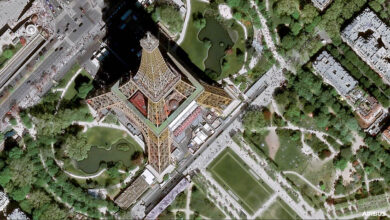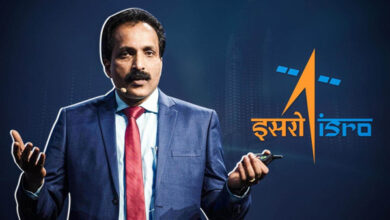‘India is on the Moon’ Chandrayaan-3’s Success Moves the Country to Next Space Chapter
By R. Anil Kumar
Bangalore, August 23. The Success of Chandrayaan-3 mission makes India the first country to reach the lunar south polar region, adding to the achievements of the country’s space programme. Two visitors from the Chandrayaan-3 — a lander named Vikram and a rover named Pragyan — landed in the southern polar region of the moon on Wednesday, the 23rd of August.

The two robots, from a mission named Chandrayaan-3, make India the first country to ever reach this part of the lunar surface— and only the fourth country ever to land on the moon.
“We have achieved soft landing on the moon,” S. Somanath, the chairman of the Indian Space Research Organization, said after a roar ripped through the ISRO compound just past 6 p.m. local time. “India is on the moon.”

India Successfully Lands Spacecraft on Moon’s Surface
The control room at the Indian Space Research Organization erupted in joy when the Chandrayaan-3 spacecraft landed on the southern polar region of the moon.
The Indian public already takes great pride in the accomplishments of the nation’s space program, which has orbited the moon and Mars and routinely launches satellites above the Earth with far fewer financial resources than other space-faring nations. But the achievement of Chandrayaan-3 is even more sweeter.
Vikram out-endured its Russian counterpart, Luna-25, which was scheduled to land on the moon on Monday in the same general vicinity as the Indian craft but crashed on Saturday following an engine malfunction.
That India managed to outdo Russia, which as the Soviet Union put the first satellite, man and woman in space, is a measure of the country’s long embrace of the science and technology needed to support a space program.
But the landing also comes at a particularly important moment in the South Asian giant’s rise.
India’s recent efforts in space exploration closely mirror the country’s diplomatic push as an ambitious power on the rise.
That assertiveness on the world stage is a central campaign message for Prime Minister Narendra Modi, who is up for re-election to a third term next year.
He has frequently fused his image with that of India’s rise as an economic, diplomatic and technological power.
Prime Minister Modi has been physically present at mission control for other recent moments in India’s space history, including during a successful orbit of Mars in 2014 and a failed moon landing in 2019 where he was seen consoling the then Chairman of ISRO K Shivan who was in tears.
But the Chandrayaan-3 landing coincided with his trip to South Africa for a meeting of the BRICS Nations.
Amid the diplomatic events, PM Modi’s face beamed into the control room in Bengaluru during the landing’s final minutes.
In extended remarks after the successful touchdown, in both Hindi and English, he declared the landing as “the moment for new, developing India.”
The control room in Bengaluru became a joyous scene among the engineers, scientists and technicians of the Indian Space Research Organization.
Speaking after the landing, members of the ISRO leadership who managed Chandrayaan-3 made clear that the failure of their last moon landing attempt, in 2019, was a major driving force behind their work.
Mr. Somanath has described the current moment as an inflection point, with the country opening its space efforts to private investors after half a century of state monopoly that made advances but at a “a shoestring budget mode of working.”
“These are very cost-effective missions,” Mr. Somanath said after the landing. “No one in the world can do it like we do.”
When pressed by reporters about the cost of Chandrayaan-3, Mr. Somanath deflected with laughter: “I won’t disclose such secrets, we don’t want everyone else to become so cost-effective!”
“From the day we started rebuilding our spacecraft after Chandaryaan-2 experience, it has been breathe in breathe out Chandrayaan-3 for our team,” said Kalpana Kalahasti, the mission’s associate project director.
Chandrayaan-3 has been orbiting the moon since early August. On Sunday, an engine burn pushed the lander into an elliptical orbit that passed within 15 miles of the surface. On Wednesday, as the spacecraft approached the low point of the orbit, moving at more than 3,700 miles per hour, a pre-programmed sequence of manoeuvers commenced.
The craft’s four engines fired again at the start of what ISRO called the “rough braking” portion of the descent, its speed of fall accelerating. After 11.5 minutes, the lander was just over 4.5 miles above the surface and started rotating from a horizontal to a vertical position while continuing its descent.
The spacecraft stopped to hover about 150 yards above the surface for a few seconds, then resumed its downward journey until it settled gently on the surface, about 370 miles from the south pole. The landing sequence took about 19 minutes.
Chandrayaan-3 is a scientific mission, timed for a two-week period when the sun will shine on the landing site and provide energy for the solar-powered lander and rover. The lander and rover will use a range of instruments to make thermal, seismic and mineralogical measurements.
India and ISRO have many other plans afoot.
Although an Indian astronaut flew to orbit in 1984, the country has never sent people to space on its own. India is preparing its first astronaut mission, called Gaganyaan. But the project, which aims to send three Indian astronauts to space on the country’s own spacecraft, has faced delays, and ISRO has not announced a date.
The country is also working on launching a solar observatory called Aditya-L1 in early September, and later, an Earth observation satellite built jointly with NASA. India is also planning a follow-up to its recently concluded Mars orbiter mission.
While ISRO will continue exploring the solar system, the accomplishments of India’s private sector may soon garner as much attention. A younger generation of space engineers, inspired by SpaceX, have started going into business on their own.
While ISRO’s budget in the past fiscal year was less than $1.5 billion, the size of India’s private space economy is already at least $6 billion and is expected to triple as early as 2025.
And the pace of change is quickening. PM Modi’s government wants India to harness the private sector’s entrepreneurial energy to put more satellites and investment into space — and faster.
Up on the moon Vikram and Pragyan were set to get to work, with the rover possibly rolling onto the lunar surface in the coming hours or sometime on Thursday according to Mr. Somanath.
The landing site, on a plateau south of the Manzinus crater and to the west of the Boguslawsky crater, is at about the same latitude as the edge of Antarctica on Earth.
To date, spacecraft have successfully landed on the moon closer to the equator. The polar regions are intriguing because there is frozen water at the bottom of permanently shadowed craters. If such water can be found in sufficient quantities and extracted, astronauts could use it for future space exploration.
But in Bengaluru after the launch, Mr. Somanath hinted that India had its eyes on worlds beyond the moon.
“It is very difficult for any nation to achieve. But we have done so with just two attempts,” he said. “It gives confidence to land on Mars and maybe Venus and other planets, maybe asteroids, ” Somanath hinted.





